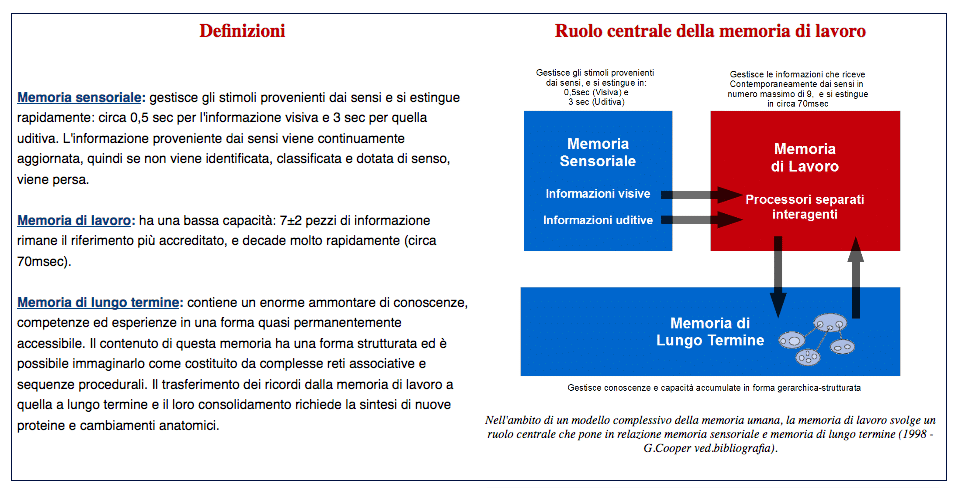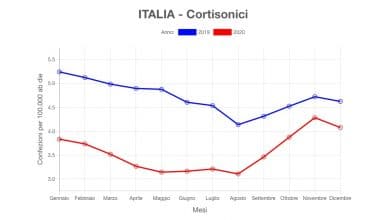
Human beings can only store four or five items at a time in working memory: if this becomes overloaded, the feedback signals sent by some areas of the brain are interrupted and the brain network gets out of sync. The phenomenon could be linked to a "predictive coding" of sensory information: the brain always has real-time expectations about what it is experiencing and experiencing
by Jordana Capelewicz/Quanta Magazine
In 1956, noted cognitive psychologist George Miller published one of the most cited articles in the field: "The Magic Number Seven, Plus or Minus Two." In that paper, he argued that even though the brain can store a lifetime of knowledge in its trillion connections, the number of items humans can actively and simultaneously maintain in conscious awareness is limited, on average, to seven.
The elements could be a series of digits, a handful of objects scattered around a room, a list of overlapping words or sounds. Whatever they are, Miller wrote, only seven of them can fit into what's called working memory, where they're available for our focused attention and other cognitive processes. Their stay in working memory is short and limited: when they are no longer actively thought about, they are either stored elsewhere or forgotten.
Since Miller's time, neuroscientists and psychologists have continued to study working memory and its surprisingly strict limits, finding that they may be closer to four or five items than seven. And they've studied how people get around the limit: We can remember all the digits of a phone number by "chopping up" the numbers (remembering 1, then 4, instead of the single element 14, for example), or by developing mnemonic tricks to extract random digits of pi from long-term memory.
But why working memory starts to fail at such a low threshold is not yet clear. Researchers can see that any attempt to cross that limit causes information to degrade: neural representations become 'more fragile', brain rhythms change, and memories are lost. This occurs with even fewer elements in people who have been diagnosed with neurological disorders, such as schizophrenia.
The mechanism behind the degradation, however, remained unknown until recently. In an article published in “Cerebral Cortex” in March, three scientists have found that a significant weakening of feedback signals between different parts of the brain is responsible for the problem. The study sheds light on memory function and dysfunction, while also offering further evidence for a promising theory of how the brain processes information.
A synchronized hum
Earl Miller, a neuroscientist at MIT's Picower Institute for Learning and Memory, Dimitris Pinotsis, a researcher in his lab, and Timothy Buschman, an assistant professor at Princeton University, wanted to know what sets such a low limit on working memory capacity.

They already knew that a network involving three brain regions is active in working memory: the prefrontal cortex, the frontal eye fields, and the lateral intraparietal area. But they had not yet observed changes in neural activity that corresponded to the rapid transition from remembering to not remembering that accompanies exceeding the working memory limit.
So they revived a working memory test that Miller's lab had conducted a few years earlier, in which the researchers showed monkeys a series of screens: first a series of colored squares, followed briefly by a blank screen, and then again. from the home screen, but this time with the color of a square changed.
The animals had to detect the difference between the screens. Sometimes the number of squares fell below the working memory capacity, sometimes it rose above it. Electrodes inserted into the monkeys' brains recorded the timing and frequency of brain waves produced by various populations of neurons as the animals tackled each task.
These waves are essentially the coordinated rhythms of millions of neurons becoming active or silent at the same time. When areas of the brain show corresponding oscillations, both in time and frequency, they are said to be in sync. “It's like they're buzzing together,” Miller said. "And neurons buzzing together are communicating."
Miller likens this to a road network: the physical connections of the brain behave like roads and highways, while the resonance patterns created by the oscillating brain waves that "buzz" together are the traffic lights that direct the flow of traffic. This configuration, the researchers hypothesize, appears to help somehow "bind" active networks to a more robust representation of an experience.

In their recent work, Miller and colleagues mined wobble data gleaned from monkey tests to gain insights into how this tripartite memory network works. They built a detailed mechanistic model incorporating hypotheses – based on previous research – about the network's structure and activity: the locations and behaviors (eg, excitatory or inhibitory) of specific neural populations, or the frequencies of certain oscillations.
The researchers then generated some competing hypotheses about how different areas of the brain might "talk" to each other -- including regarding the direction and intensity of that dialogue -- as the monkeys had to remember more and more voices. Finally, they compared these calculations with their experimental data to determine which of the scenarios was the most likely.
Their model confirmed that the three brain regions behave like jugglers engaged in an acrobatic throw of objects.
The prefrontal cortex appears to help build an internal model of the world by sending out so-called signals top down or feedback, which transmit this pattern to lower-level brain areas. Meanwhile, the frontal superficial eye fields and lateral intraparietal area send raw sensory input to deeper areas of the prefrontal cortex, in the form of signals bottom up or feed forward. The differences between the top-down model and bottom-up sensory information allow the brain to understand what it is experiencing and to adjust its internal models accordingly.
Miller and colleagues found that when the number of items to remember exceeded the capacity of monkey working memory, the top-down feedback connection from the prefrontal cortex to the other two regions was broken. The feedforward connections, however, remained intact.
The weakening of feedback signals, according to the team's models, led to a loss of synchrony between areas of the brain. Without the prediction-oriented communications from the prefrontal cortex, the working memory network went out of sync.
Update the model
But why is top-down feedback so vulnerable to an increase in the number of items to remember? The researchers hypothesis is that the patterned information coming from the prefrontal cortex essentially represents a set of predictions about what the brain will perceive in the world: in this case, the content of items held in working memory.
"For example, as you're reading this sentence, you're going to have expectations about the word, chunks of the sentence or the whole sentence," notes University College London neuroscientist Karl Friston, who was not involved in the study. “Having a real-time representation or expectation about the sentence means having an implicit representation of the past and the future.”
Several neuroscientists believe that the brain relies heavily on this "predictive coding" of sensory data to perform its routine cognitive and command functions. But Miller and colleagues hypothesize that when the amount of items placed in working memory becomes too large, the number of possible predictions for those items cannot be encoded easily in the feedback signal. As a result, feedback fails and the overloaded working memory system collapses.

Miller's lab and others are working to carve out a more important role for the interaction between brain waves in the working memory model, which traditionally places most of the emphasis on the electrical impulse transport activity of individual neurons. . We're also investigating why the upper limit of working memory is around four or five items, and not some other number.
Miller thinks the brain manipulates items in working memory one at a time, alternating. “That means all information has to fit into a brain wave,” he said. “When you exceed the capacity of that one brain wave, you have reached the limit of working memory.”
"The question now is where all of this will take us," said Rufin Van Rullen, a researcher at France's CNRS who finds the group's modeling and conclusions "powerful," pending further experimental confirmation. "We need to actually get into the brain and find more direct evidence of these connections."
The potential reward is high. Strengthening a predictive coding model for working memory will not only allow for a better understanding of how the brain works and what might go wrong in neurological disease, it will also have crucial implications for what we mean by "intelligence" and even for the individuality, according to Friston.
For starters, better understanding what feedback connections do in the brain could lead to major leaps in artificial intelligence research, which today focuses more on feedforward signals and classification algorithms. “But sometimes a system might need to make a decision not based on what it sees but what it remembers,” Pinotsis said.
(The original of this article was published June 6, 2018 by QuantaMagazine.org, an independent online editorial publication sponsored by the Simons Foundation to enhance public understanding of science. Translation and editing by Le Scienze. Reproduction authorized, all rights reserved)






